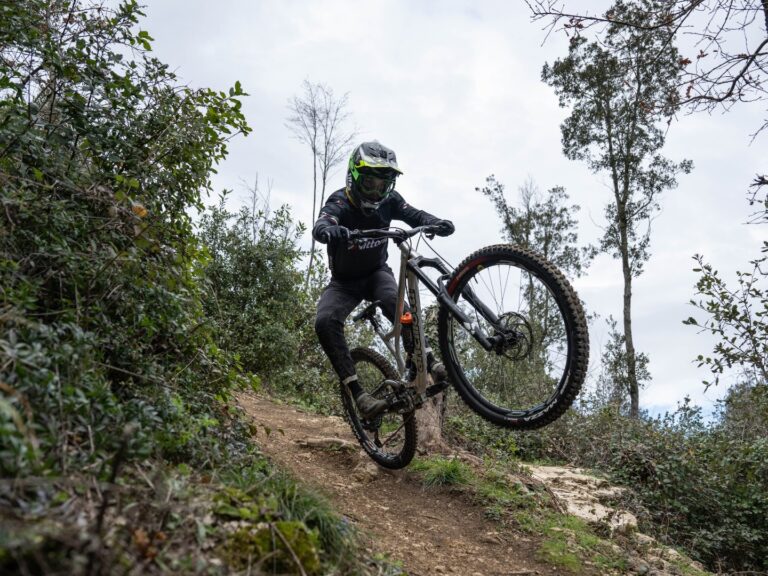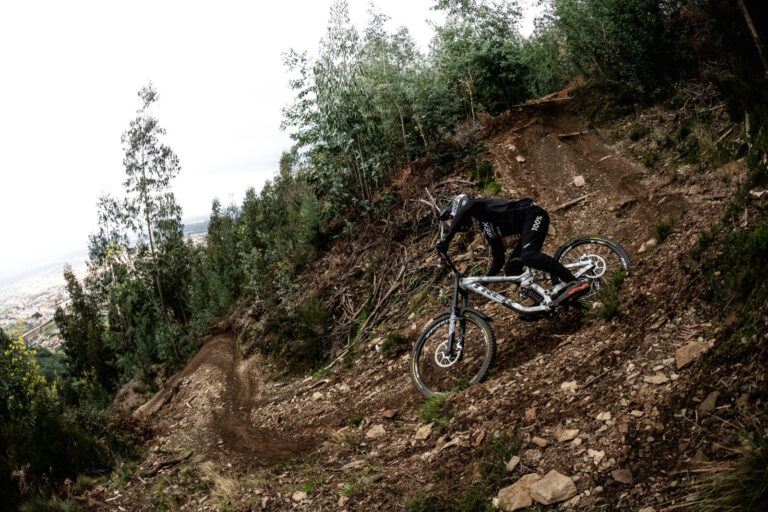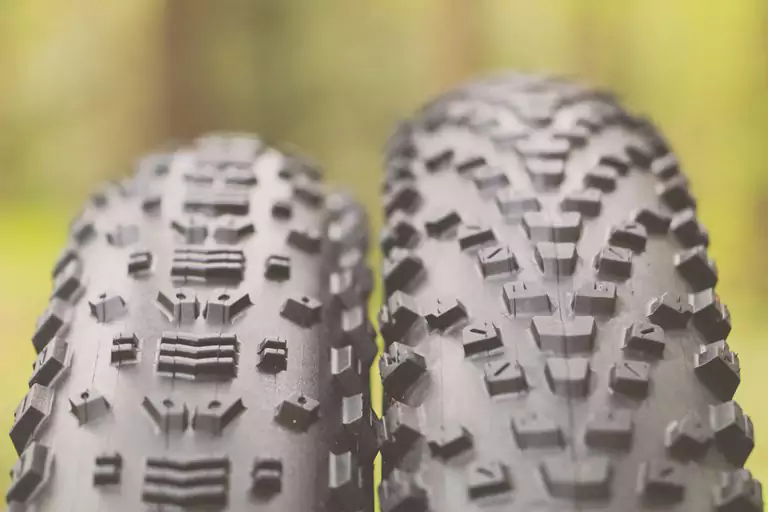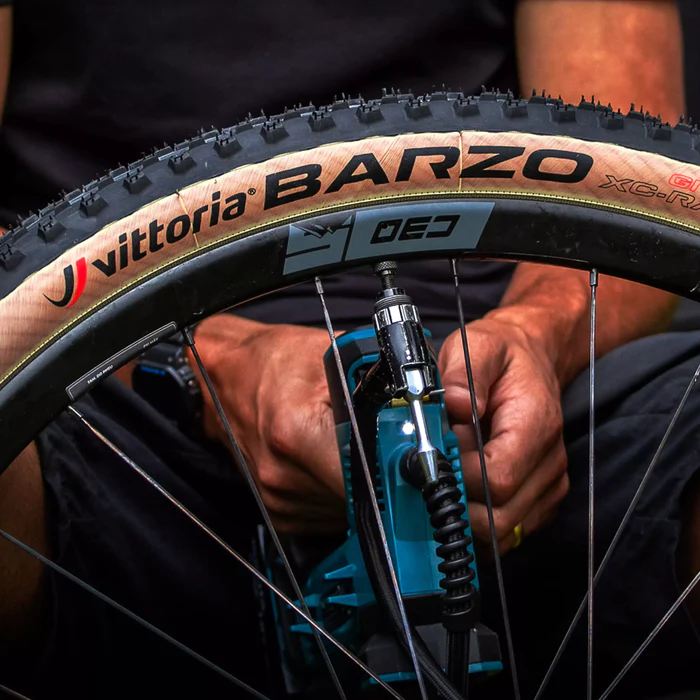The Downhill Debate: Inner Tube vs Tubeless for Downhill Biking
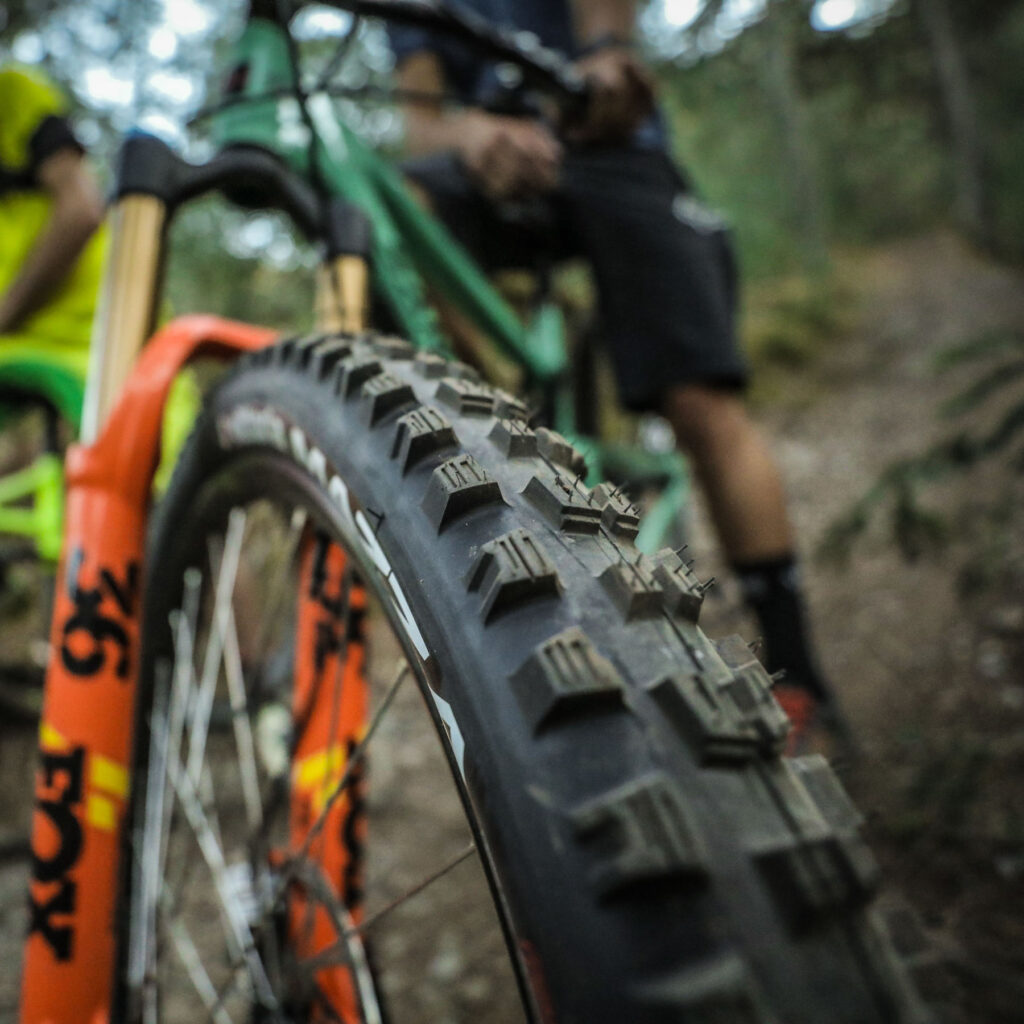
Key Point Summary of Inner Tube vs Tubeless for Downhill Biking:
- Puncture Resistance: Tubeless tires offer superior puncture resistance, especially beneficial in the rugged terrain of downhill biking.
- Weight Savings: Going tubeless can reduce the overall weight of the bike, offering a slight edge in speed and maneuverability.
- Ride Quality and Traction: Tubeless systems allow for lower tire pressures without the risk of pinch flats, enhancing grip and ride comfort.
- Maintenance and Setup: While tubeless setups can initially be more complex and require regular maintenance, they offer long-term benefits in durability and performance.
In the realm of downhill mountain biking, where the trails are rough and the stakes are high, the choice between running inner tube or tubeless tires can significantly impact your ride. As a masters cyclist with extensive experience across multiple disciplines, I’ve navigated the transition from inner tubes to tubeless systems and witnessed firsthand the evolution of tire technology in the pursuit of performance and reliability.
The Case for Tubeless in Downhill
The tubeless tire system, which eliminates the need for an inner tube by creating an airtight seal between the tire and rim, has become increasingly popular in downhill biking for several reasons. The most notable advantage is its superior puncture resistance. Tubeless tires use a liquid sealant that can instantly seal small punctures and cuts in the tire’s tread, reducing the frequency of flats and allowing riders to continue without interruption. This feature alone makes tubeless an attractive option for the demanding conditions of downhill trails.
Another benefit of going tubeless is the weight savings. Removing the inner tube cuts down on the rotational mass of the wheel, which can translate to quicker acceleration and easier handling—crucial factors in the high-speed world of downhill racing. Additionally, the ability to run lower tire pressures without the risk of pinch flats (which occur when an inner tube is pinched against the rim) means improved traction and a smoother ride over rough terrain. Lower pressures allow the tire to conform better to the surface, increasing the contact area and grip, which can boost a rider’s confidence and control during descents.
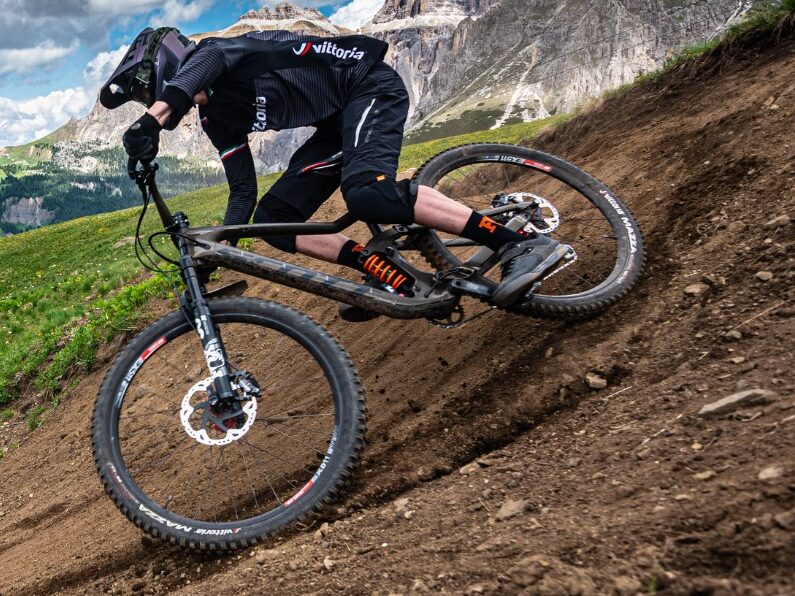
Considerations and Personal Insights
Despite its advantages, the tubeless system is not without its challenges. The initial setup can be more complex and time-consuming than traditional inner tubes, requiring specific tubeless-ready rims and tires, sealant, and sometimes a bit of trial and error to achieve a proper seal. Maintenance is also a consideration, as the sealant needs to be topped up or replaced periodically to ensure effectiveness.
From my journey, the switch to tubeless was a game-changer, particularly for downhill segments where the risk of punctures is high, and every fraction of a second counts. The enhanced ride quality and reduced maintenance downtime have allowed me to focus more on improving my skills and enjoying the ride, rather than worrying about flats or carrying extensive repair kits.
Making the Choice
For beginner to mid-level riders considering the switch to tubeless for downhill biking, the decision should be based on personal riding style, the typical conditions of your local trails, and whether the benefits align with your biking goals. While the upfront cost and setup can be deterrents, the long-term advantages of reduced flats, improved performance, and enhanced ride quality make tubeless an appealing choice for many.
Inner Tube vs Tubeless for Downhill Biking: Wrapping Up
In conclusion, whether you’re racing competitively or simply enjoying the thrill of downhill biking, the choice between inner tube and tubeless tires is a significant one. Weighing the pros and cons of each system in light of your preferences and riding conditions will guide you to the best choice for your biking adventures, ensuring that your focus remains on the trail ahead. Here’s another great insight from Global Mountain Bike Network.
Many downhill (DH) bike tires on the market are designed to offer the versatility of being run with either a traditional inner tube setup or as a tubeless system, catering to riders’ preferences and the demands of modern downhill biking. A notable model that provides this reversible option, allowing for both tube and tubeless setups, is the Maxxis Minion DHR II.
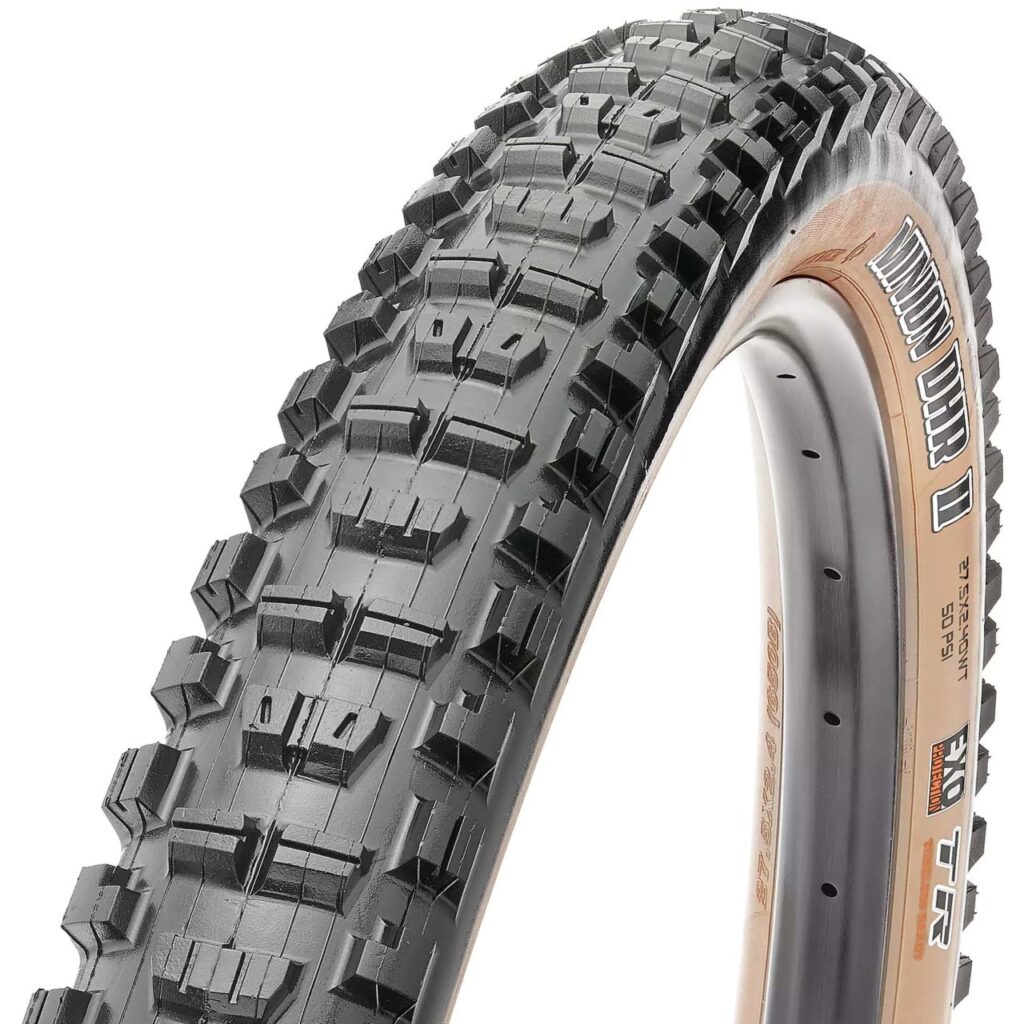
The Maxxis Minion DHR II is a standout in the world of downhill mountain biking for its aggressive tread pattern, excellent cornering capabilities, and formidable grip on a wide range of terrains, from loose over hardpack to wet and muddy conditions. It is engineered as a Tubeless Ready (TR) tire, meaning it can be used with an inner tube for those preferring a traditional setup or converted to tubeless using sealant for those seeking the benefits of a tubeless system, such as reduced weight and increased puncture resistance. This flexibility makes the Minion DHR II a favorite among downhill enthusiasts who demand high performance and versatility from their tires.
FAQ
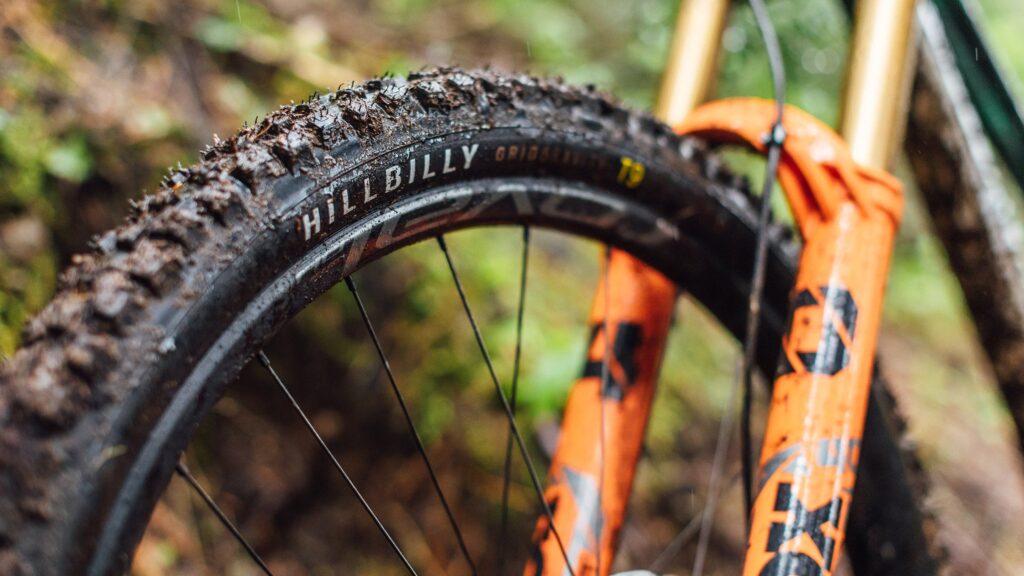
Is tubeless better than inner tube?
Yes, tubeless is often considered better than inner tubes for most cycling disciplines, including mountain biking and road cycling, due to lower risk of punctures (thanks to sealant), the ability to run lower pressures for improved traction and comfort, and reduced weight.
What is the disadvantage of tubeless?
The main disadvantages of tubeless setups are the initial setup complexity and cost, maintenance (such as needing to refill sealant periodically), and potential difficulty in mounting and seating the tire on the rim.
Do pro cyclists use tubeless tires?
Yes, pro cyclists do use tubeless tires, especially in mountain biking and gravel racing. Their use in professional road cycling has been increasing due to their advantages in reducing flats and improving ride quality, though tubular tires are still commonly used in certain races and conditions.
Happy cycling
John



